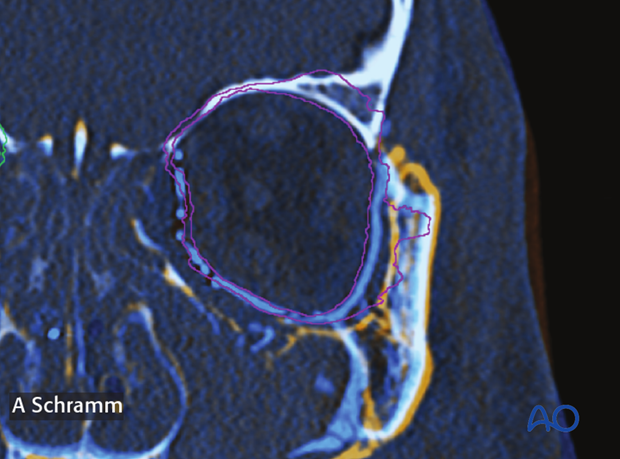Virtual planning and intraoperative navigation
1. Introduction
Indications
Whenever an intraoperative CT scanner is available, an intraoperative scan should be obtained for intraoperative evaluation of the reduction.
Zygomatic fractures that are severely displaced, have significant internal orbital disruption, and/or whose articulations are comminuted benefit from virtual planning and intraoperative navigation.
Additionally, after zygomatic reduction, an intraoperative CT-scan can be fused to the virtual plan to determine the adequacy of zygoma reduction and the status of the internal orbit.
When using computer assisted surgery, the reduction (and fixation if necessary) is performed according to standard procedures as described in the AO Surgery Reference. It should be considered an adjunct to surgical treatment.
Computer assisted surgery in treating fractures allows virtual preoperative planning of the desired reconstruction using preoperative CT scans and appropriate software.
Intraoperative imaging combined with image fusion of preoperative and intraoperative CT scans, and the virtual plan allows verification of proper reduction.
When dealing with complex fractures, intraoperative navigation is extremely useful to assist in reducing the zygoma and properly reconstructing the orbital walls. Often intraoperative corrections of fragment reduction and orbital wall reconstruction are necessary. Rather than performing repeated intraoperative CT scans, radiation dose-free intraoperative navigation provides intraoperative guidance to the virtually planned reconstruction.
In complex orbital floor fractures radiopaque material for orbital wall reconstruction can easily be visualized on imaging allowing intraoperative or postoperative verification of proper reconstruction.
With this technique, insufficient fracture reduction can be can be identified and corrected, eliminating the need for secondary procedures which may be necessary if only postoperative imaging is performed.
Intraoperative imaging requires an additional 10-15 min.
Computer assisted orbital reconstruction planning
Reconstruction of complex orbital wall defects may benefit from preoperative virtual insertion of anatomically preformed orbital implants.
Some complex zygomatico-orbital defects may require patient specific implants for alloplastic reconstruction of orbital walls. This can be performed by transferring virtual preoperative planning into CAD-CAM tools to create patient specific alloplastic implants or by pre-bending standard implants with the use of stereolithographic models either from patients' anatomy or from virtually preplanned reconstruction.
Useful additional reading
2. Virtual planning
The preoperative CT scan shows a severely displaced fracture of the entire midface. Complex fractures of both orbits are also present.
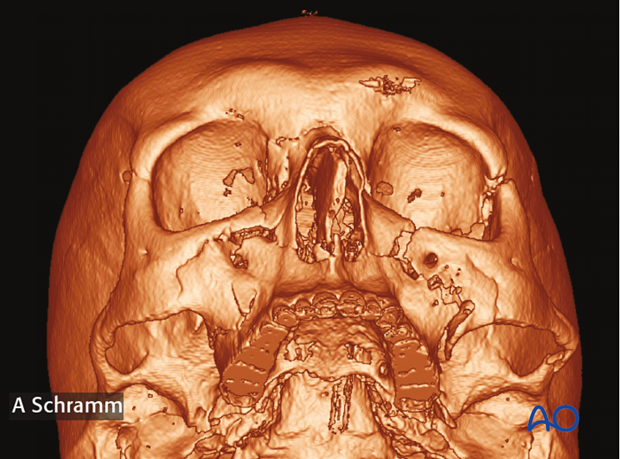
Proper preoperative examination of CT-scans requires multiplanar views consisting of axial, coronal, sagittal, and 3D-reconstruction.
To facilitate intraoperative navigation, titanium screws have to be inserted as fiducial markers into the skull prior to CT scanning. In a case where the maxilla is not fractured, fiducial markers can be fixed to dental splints.
Skin fiducials or laser surface scanning in craniofacial trauma are not applicable due to soft tissue changes.
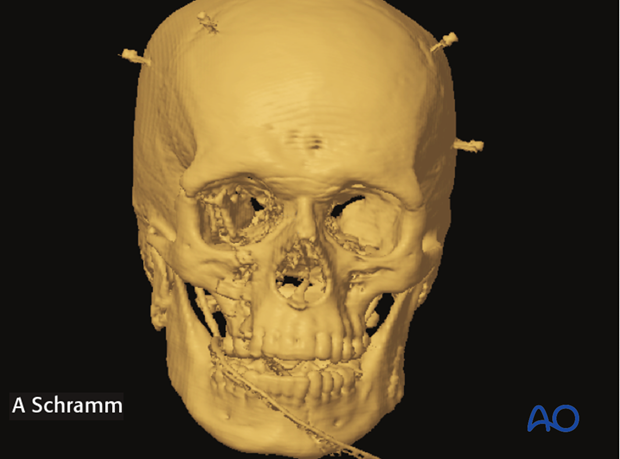
Orientation of the data sets
The first step in preoperative planning is anatomically correct orientation of the data set according to patient's individual anatomy.
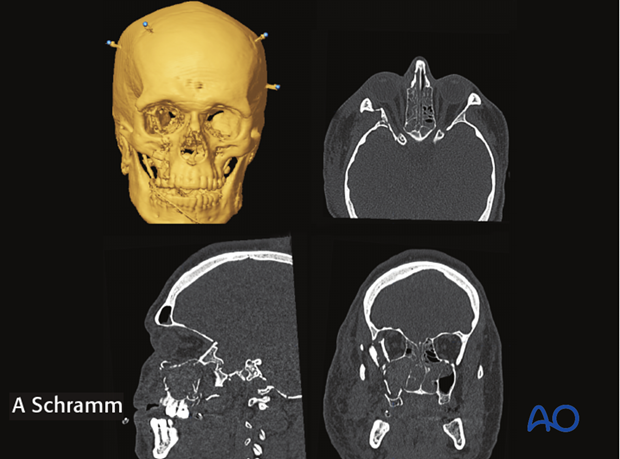
Segmentation
The second step for virtual zygomatico-orbital reconstruction is autosegmentation of temporal bones, zygoma, and orbits.
Using autosegmentation algorithms, this procedure is performed by the software. The result can be manually changed to surgeons' needs.
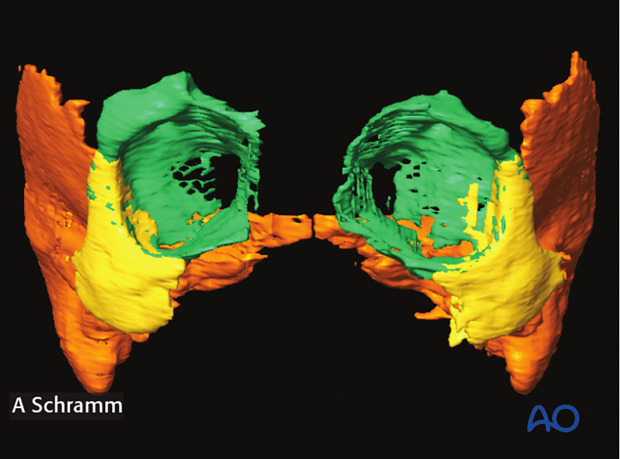
Virtual reduction and reconstruction
Virtual simulation of zygoma reduction and orbital wall reconstruction is performed by mirroring the unaffected contralateral zygoma and orbit after auto segmentation or by moving the affected segments manually.
In bilateral cases, as shown here, virtual bending and shaping of the segmented areas allows virtual orbital reconstruction.
After virtual reconstruction, the modified dataset serves as a virtual template that can be used for intraoperative navigation, intraoperative imaging and postoperative verification of the reduction/reconstruction.
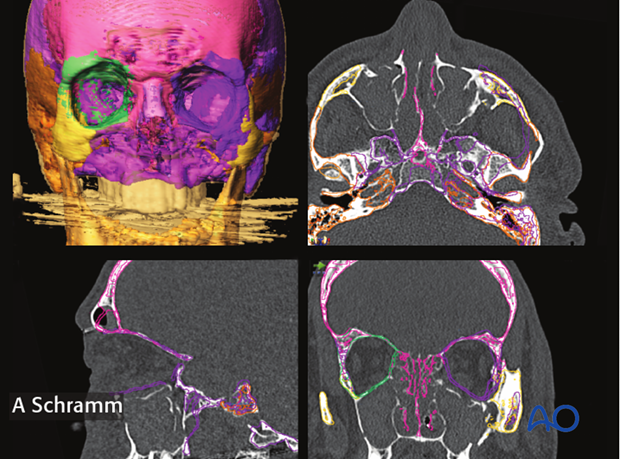
3. Zygoma reduction using intraoperative navigation
Tracking of patients head is achieved with a dynamic reference frame (DRF) attached to the cranial bone. Alternatively the DRF can be attached to a Mayfield clamp. Headsets should be avoided due to soft tissue movement.
Registration of the DRF to the fiducial markers in the preoperative CT scan is performed using the navigation's software.
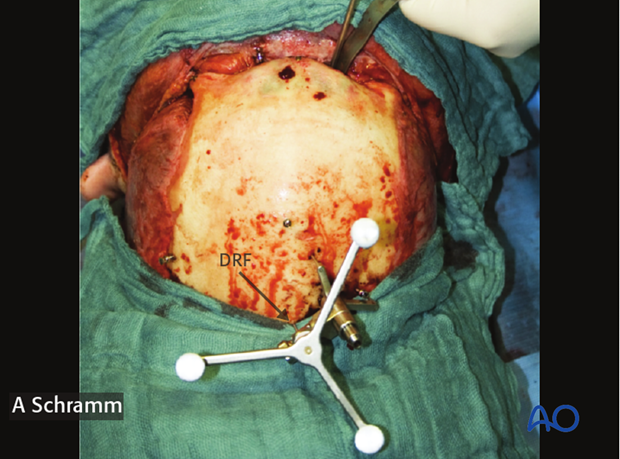
Pointer based infrared navigation provides radiation-free verification of the reduction of the displaced zygoma according to the virtual template created during the planning.
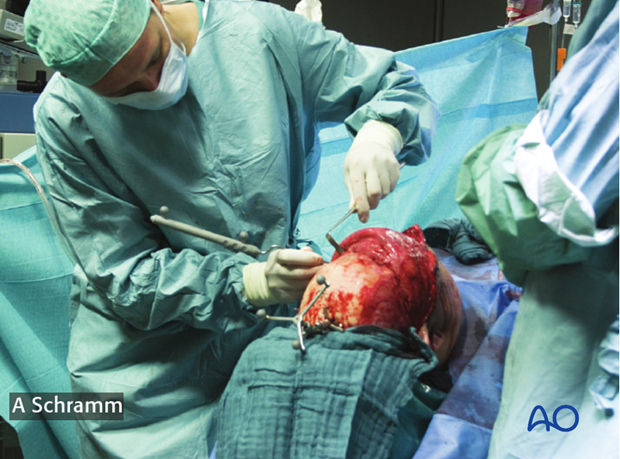
After the reduction of the zygoma (using standard techniques), the tip of the pointer is placed on the malar prominence to correlate actual zygoma position with the contours of the virtual template via frameless stereotaxy.
This procedure has to be repeated after any changes of the zygoma position.
Stable fixation with miniplates follows successful reduction of the zygoma.
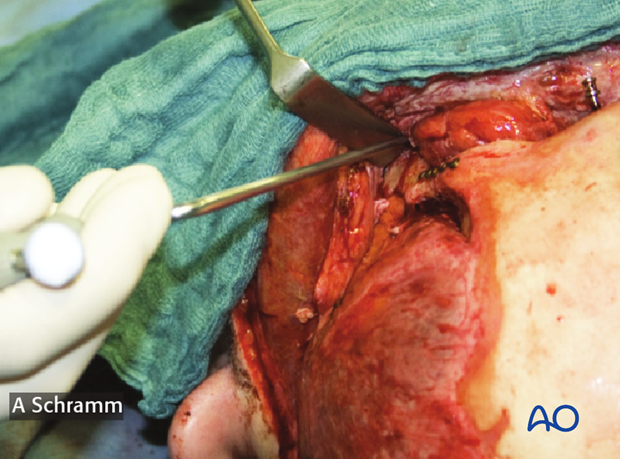
4. Orbital wall reconstruction using intraoperative navigation
To verify satisfactory orbital wall reconstruction, the navigation pointer is placed on the surface of the orbital implant to correlate its position to the virtual reconstruction.
This procedure has to be repeated after any changes of implant position.
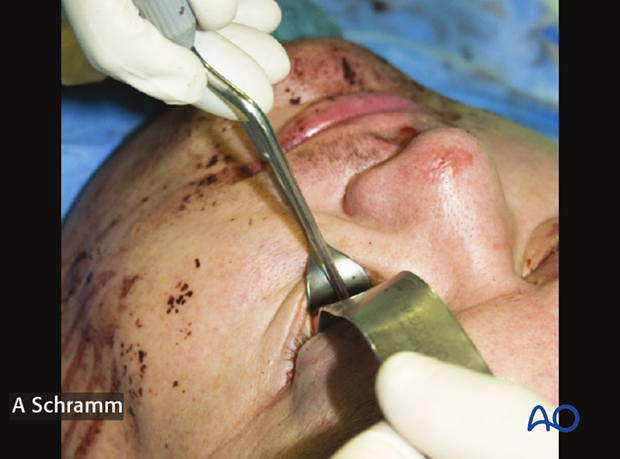
5. Intraoperative or postoperative assessment of reconstruction/reduction
After fusing of preoperative CT-scan (gold), virtual template (purple and green) and intra- or postoperative CT-scan (blue), the quality of orbital wall reconstruction and zygoma reduction can be assessed.
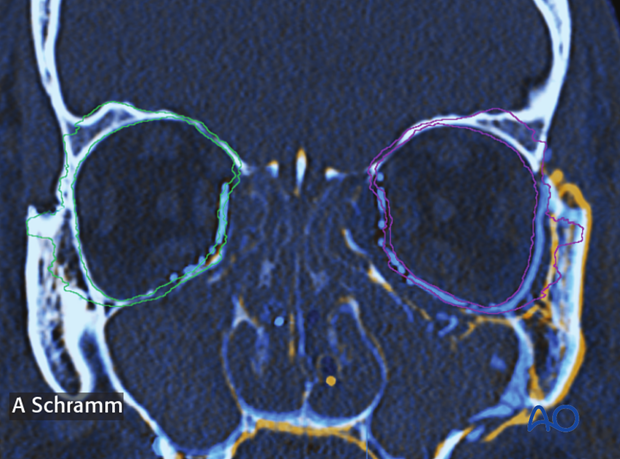
Note that the post reconstruction left zygoma and orbit image fit perfectly to the plan (purple).
